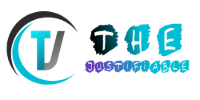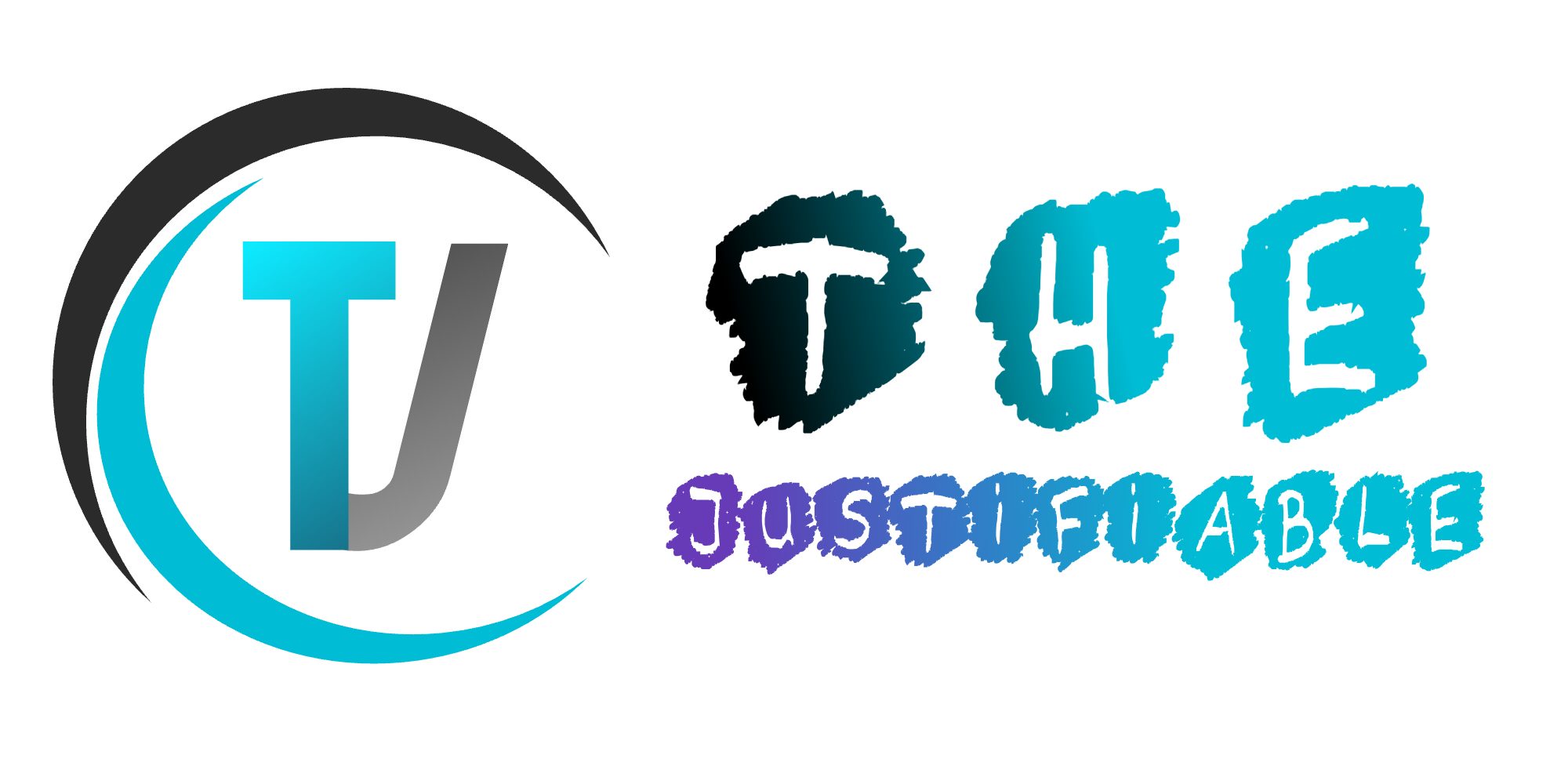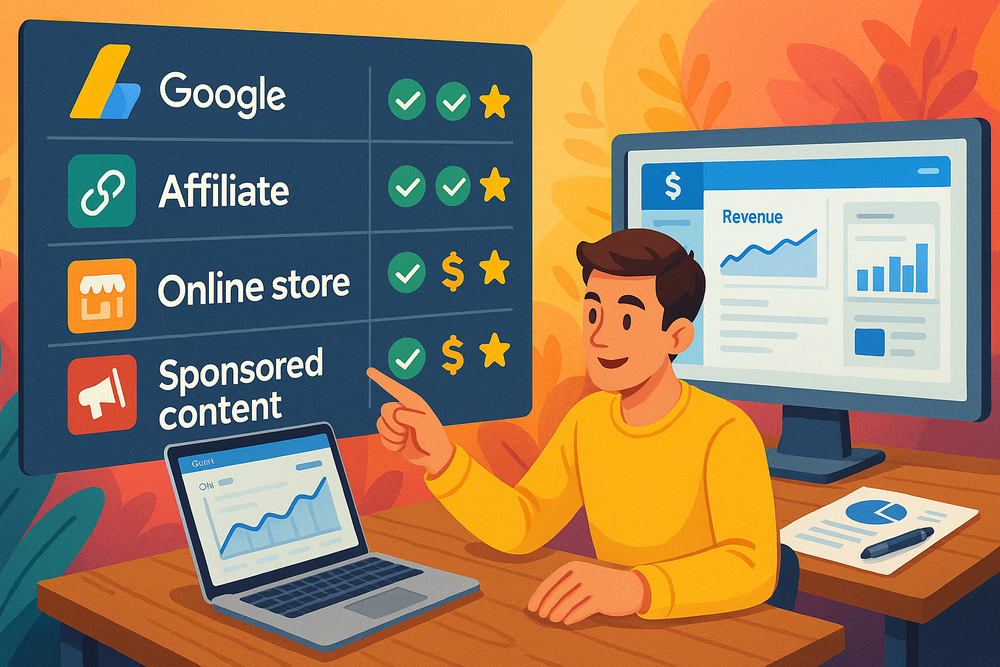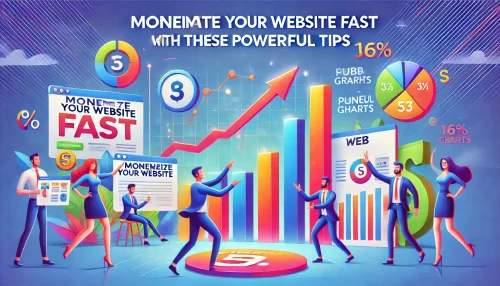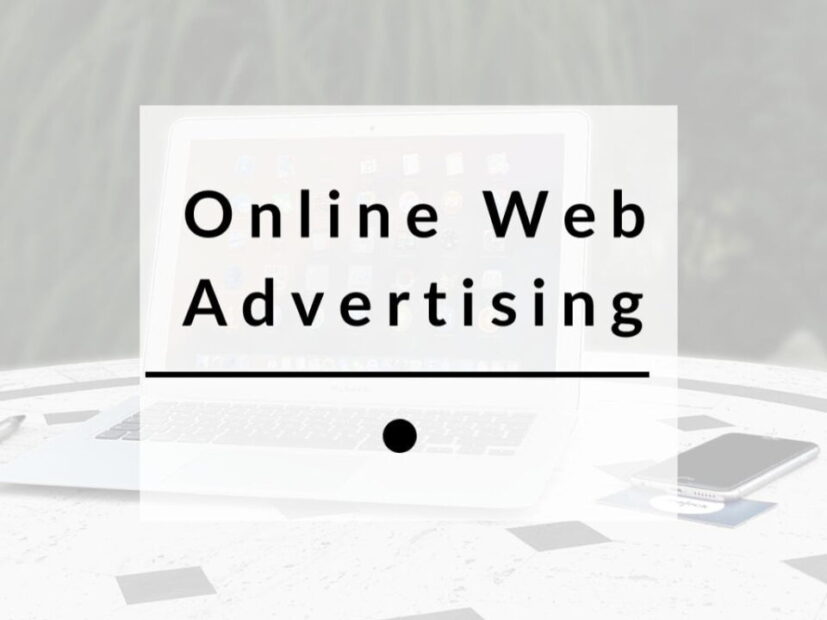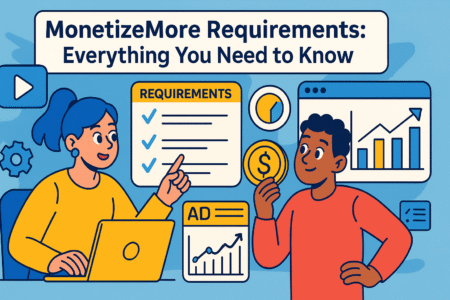Table of Contents
Looking for the best ways to monetize a website without getting overwhelmed or buried in tech? You’re not alone. Whether you’re running a blog, an online portfolio, or a niche content site, turning visitors into income doesn’t have to be complicated.
How do you start earning without a product? Can you really make passive income from simple content tweaks? What’s working right now that doesn’t require a huge audience?
In this guide, we’ll break down proven strategies you can apply today—some take just minutes to set up, others can unlock long-term income streams. Let’s make monetizing your website feel less like a mystery and more like a clear, achievable path.
1. Turn Traffic Into Cash With Display Advertising
This is one of the easiest and most passive ways to start earning from your website. If you’re pulling consistent traffic, even a modest amount, display ads can quietly work in the background to generate income 24/7.
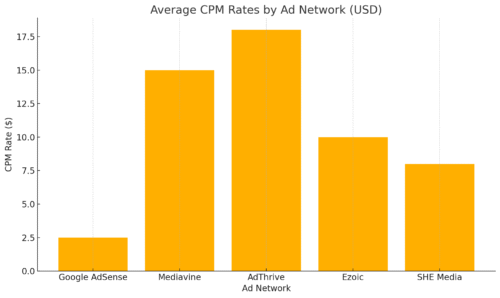
Choose The Right Ad Network for Your Niche
Not all ad networks are created equal. Some specialize in lifestyle blogs, while others cater to tech, finance, or education. Picking one that fits your niche can seriously impact your earnings.
Here’s how a few popular networks stack up:
- Adsterra: Great for beginners. Easy to get started, but has lower CPM rates.
- Mediavine: Requires at least 50,000 sessions/month but offers high CPMs and full-service support.
- AdThrive: A favorite among established bloggers. Requires 100,000 monthly pageviews and works best for lifestyle and parenting content.
- Ezoic: Good for sites with over 10,000 monthly pageviews. Uses AI to optimize ads.
- SHE Media: Tailored to women-focused content, with lifestyle and parenting niches.
As the chart above shows, CPM rates can vary wildly. Choosing the right network can literally 5x your earnings without more traffic.
Optimize Ad Placements Without Compromising UX
Too many ads, or poor placement, can ruin the user experience. The goal is balance.
Try these approaches:
- Place ads after the first paragraph, in the sidebar, and at the end of articles.
- Avoid interrupting the reading flow with intrusive mid-content ads.
- Use sticky ads (like sticky sidebars or footers) sparingly—they work, but they can annoy users if overused.
User experience affects both SEO and earnings. Visitors who bounce early never see your ads long enough to generate revenue.
Set Up Auto Ads to Maximize Passive Revenue
Auto ads are like having a personal ad manager. Google and other platforms now offer automated ad placement, using machine learning to test and place ads where they convert best.
The benefit?
- No guesswork—just switch it on and let the platform learn.
- It can increase your earnings by 20–40% over time, especially if your site has enough traffic for the AI to optimize.
- It saves you time tweaking placements manually.
Still, always check the user experience on desktop and mobile after activating auto ads.
Improve Earnings With High-CTR Content Strategies
Your content directly affects ad earnings. Higher click-through rates (CTR) mean more revenue per view.
Here’s what works:
- Write helpful how-to posts and listicles—these attract engaged readers who stay longer.
- Use clean formatting with shorter paragraphs and subheadings.
- Include images and media to increase dwell time.
CTR also depends on how relevant the ad is to your content. So if you’re writing about kitchen gadgets, that page will naturally attract higher-paying ads compared to a generic lifestyle update.
2. Sell Digital Products That Require No Inventory
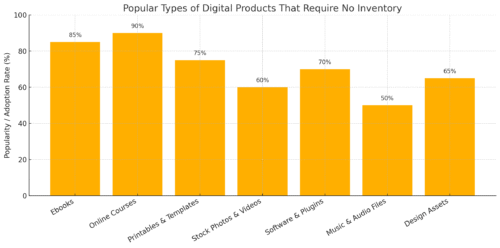
Selling digital products is one of the best ways to monetize a website if you want full control and high margins. You create something once, then sell it repeatedly—no shipping, no warehouses, no hassle.
Create and Market Ebooks or Downloadable Guides
Ebooks are a great way to turn your expertise into a product. The key is to solve a specific problem.
For example:
- A food blogger might sell “30-Minute Meals for Busy Parents.”
- A finance blogger could offer “Step-by-Step Guide to Budgeting in Your 20s.”
Use email opt-ins, exit popups, and CTA buttons in blog posts to market them. Even a short 20–30 page ebook can justify a $9–$29 price point if it delivers real value.
Use Templates, Printables, or Tools as One-Time Offers
Templates save people time—and that’s something they’re willing to pay for. Whether it’s a social media calendar, resume layout, or budgeting spreadsheet, digital tools are in demand.
Here’s what sells well:
- Canva templates for Instagram or Pinterest
- Printable planners or journals
- Notion dashboards for productivity
Platforms like Gumroad, Etsy, or Podia make selling these easy. Add product previews and testimonials to boost conversion rates.
Sell Online Courses or Mini-Workshops From Your Site
Courses take more effort upfront, but they can become a powerful recurring income stream. If you’re teaching something people want to learn, you’ve got a product.
Tips for selling:
- Start small. A 60-minute recorded workshop is easier to produce and test than a 6-week masterclass.
- Use platforms like Teachable, or LearnWorlds for hosting.
- Add bonuses—like worksheets or exclusive Q&As—to increase perceived value.
Even a $49 workshop can outsell a $10 ebook if the outcome is more transformative.
Price Smartly With Tiered or Bundle Options
Pricing isn’t just about the product—it’s about how you position it. Bundling products or creating pricing tiers lets you serve different audience segments and increase your average order value.
Try this:
- Offer a basic version, a deluxe version with bonuses, and a “complete kit” bundle.
- Use psychological pricing like $19 instead of $20.
- Include limited-time discounts to create urgency.
In my experience, even a small price change—from $15 to $17—can improve perceived value and sales volume, especially when paired with testimonials and clear benefit-driven copy.
3. Use Affiliate Marketing for Hands-Off Commissions
Affiliate marketing is one of the best ways to monetize a website if you prefer a low-maintenance, scalable method. With the right strategy, you can earn income around the clock by recommending products or services that genuinely help your audience.
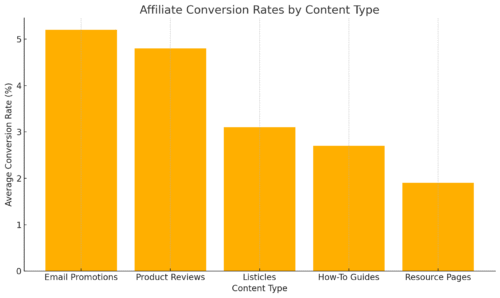
Pick Affiliate Programs That Match Your Audience’s Needs
Start by thinking about what your readers already want. If you’re writing about sustainable living, promoting eco-friendly products makes sense. For tech bloggers, software tools or hardware accessories could be a better fit.
Look for affiliate programs that offer:
- Recurring commissions (like SaaS tools)
- High payouts per sale (like online courses or premium software)
- Strong reputation and trustworthy landing pages
Networks like Awin, Impact, and PartnerStack offer a wide variety of options. You can also go direct—many companies run their own in-house programs.
The more relevant the offer is to your audience’s goals, the higher your conversion rate will be. You don’t need to promote dozens of products. A handful that really match your niche can do better over time.
Write Authentic, Conversion-Driven Product Reviews
A strong product review does more than list features—it tells a story. Share why you use the product, what problems it solves, and what someone might struggle with.
Here’s a basic structure to follow:
- Start with the problem your reader has
- Introduce the product and how you found it
- Share your personal experience or results
- Highlight pros and cons honestly
- Include a call-to-action with your affiliate link
Real examples and screenshots build trust. Even better, include a short walkthrough video or before-and-after results if possible. That’s what turns a casual reader into a buyer.
Integrate Contextual Links Naturally in Evergreen Posts
Not every affiliate link needs to live inside a review. Some of the most consistent earners are links embedded inside helpful evergreen content.
Here are smart ways to do it:
- Add a recommendation inside a how-to guide
- Link tools or services mentioned in tutorials
- Use a sidebar or footer banner with a lead-in like “My favorite tool for X”
Make sure the link fits naturally. If a post is about email marketing tips, linking to your favorite email platform feels helpful—not salesy.
Track, Test, and Optimize Affiliate Links for Profit
You can’t improve what you don’t measure. Start by using a link cloaking or tracking tool like Pretty Links or ThirstyAffiliates. These tools give you click data and make links look cleaner.
To boost earnings:
- Test different anchor texts to see what gets more clicks
- Move links higher in the content if engagement is low
- Create comparison tables or product vs. product matchups
The chart above shows how different content types perform. Product reviews and email promotions consistently have higher affiliate conversion rates than general resource pages.
Keep experimenting, but don’t overcomplicate it. A few smart tweaks can turn a quiet post into a top performer.
4. Launch a Paid Membership or Subscription Model
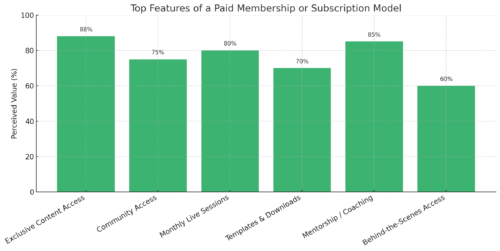
If you’re creating valuable content on a regular basis, a membership model can help turn your audience into a community. This method gives you recurring revenue and builds stronger relationships with your readers.
Offer Premium Content Behind a Paywall
The easiest way to start is by locking high-value content behind a paywall. This could be deep-dive guides, monthly video lessons, swipe files, or early access to tools.
You don’t need to hide everything. A hybrid approach works well—keep free content public and create a “pro” tier for members who want more.
Platforms like Patreon, Ghost, or Substack make this simple. If you’re on WordPress, plugins like MemberPress or Restrict Content Pro can do the job too.
The key is offering content that goes beyond what someone could find with a Google search.
Build a Private Community Using Tools Like Memberful
Many successful memberships offer more than just content—they offer connection. A private community gives members a space to ask questions, share wins, and stay accountable.
Tools that can help:
- Memberful: Easy to integrate with existing sites and email tools
- Circle: Clean, distraction-free platform for community interaction
- Discord or Slack: Great for casual, chat-based engagement
When people feel like they belong, they’re more likely to stay subscribed month after month.
Use Tiered Pricing to Serve Different Audience Levels
Not every member wants the same thing. A beginner might only want monthly tutorials, while an advanced user could be looking for group coaching or behind-the-scenes business insights.
Offer options like:
- Basic access ($5–$10/month): articles, downloads, podcast extras
- Pro access ($20–$30/month): exclusive videos, templates, and community
- VIP or mastermind level ($50+/month): coaching calls or in-depth feedback
Tiered pricing also makes your base offer look more affordable by comparison. It’s a subtle pricing psychology trick that works well.
Create a Seamless Onboarding and Retention Funnel
Getting people to sign up is only step one. What happens next decides whether they stick around.
A smooth onboarding might include:
- Welcome email with clear instructions and links
- A quick-start guide or member checklist
- Intro video or tour of the content area
Retention matters just as much. Keep members engaged with monthly updates, exclusive sneak peeks, or community shout-outs. Ask for feedback often, and make improvements based on what your members actually want.
A thriving membership program isn’t built overnight, but if you play the long game, it can become one of the most consistent and rewarding ways to monetize your website.
5. Monetize With Sponsored Posts and Brand Deals
Sponsored content can be a rewarding way to monetize your website, especially if you’ve built up a niche audience. Brands are always looking for platforms that speak directly to the people they want to reach.
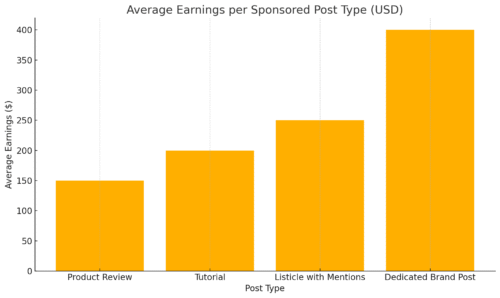
Pitch Brands That Align With Your Website’s Voice
You don’t have to wait for brands to find you. Reaching out directly can often lead to more meaningful partnerships—especially if the brand is a natural fit for your audience.
Start with:
- Identifying brands already advertising in your niche
- Reaching out via email with a short pitch and media kit
- Focusing on the value your audience brings, not just traffic numbers
Keep your pitch honest and personal. Let them know why you chose them and how your readers would benefit from their product or service.
Set Your Sponsored Content Rates With Confidence
Pricing is a common stumbling block. If you undercharge, you risk burnout. If you overcharge without proof of value, brands might ghost you.
Base your rates on:
- Website traffic and engagement (not just pageviews, but time on page)
- Social media reach if you’re including promotion
- Type of content (a product review takes more effort than a mention in a roundup)
The chart above gives a rough idea of how different post types are priced. A well-written, dedicated brand post can command significantly higher rates than simple mentions.
Start with a rate card, but stay open to negotiation based on scope.
Disclose Transparently Without Losing Trust
It’s not just good practice—it’s required. Always disclose sponsored content clearly and honestly. It builds trust with your audience and keeps you compliant with FTC guidelines.
Simple language works best:
- “This post is sponsored by [Brand Name], but all opinions are my own.”
- Place disclosures at the top, not buried at the bottom
Transparency won’t hurt conversions. In fact, it often boosts them—readers respect creators who are upfront.
Create High-Value Campaigns That Brands Will Renew
The first collaboration is just the beginning. If a brand gets results from your campaign, they’re far more likely to come back.
What helps:
- Clear performance reporting (clicks, engagement, comments)
- Fast communication and on-time delivery
- Extra touches like behind-the-scenes content or social shares
Send a follow-up report 7–10 days after the post goes live. Show them what worked and suggest new ideas based on that performance. That’s how you turn one post into a long-term partnership.
6. Offer Freelance or Consulting Services
If you’ve got a skill—writing, design, marketing, tech—you can turn it into income by offering freelance services. It’s one of the fastest ways to monetize a website, especially while building other passive streams.
Build a Service Page That Converts Visitors Into Clients
Your service page should be more than a résumé. Think of it as a sales page that answers one question: Why should someone hire you?
Key elements to include:
- Clear list of services (e.g., “Blog Writing for SaaS,” “Custom WordPress Design”)
- Short bio that shares who you help and how
- Call-to-action (CTA) that leads to a contact form or booking link
Use benefit-driven language: instead of “I write articles,” try “I create blog content that ranks and converts.”
Use Blog Content to Showcase Your Expertise
Blogging isn’t just for traffic—it’s proof that you know your stuff. Use your blog to:
- Share in-depth tutorials or case studies
- Break down client wins (with permission)
- Write thought leadership pieces that speak to your niche
Clients often find service providers through content, not job boards. A single well-ranked post can become a lead source for years.
Collect Testimonials and Portfolio Proof
People trust people. A glowing testimonial or solid portfolio example can tip someone from “interested” to “ready to book.”
What helps:
- Screenshots or before-and-after results
- Snippets from client emails (with permission)
- Quick video or audio testimonials if possible
Don’t wait until the project ends—ask for feedback mid-project while the energy is high.
Automate Client Inquiries With Lead Capture Tools
Avoid endless email back-and-forth. Instead, use tools like:
- Calendly or TidyCal for booking calls
- Typeform or Google Forms for client intake
- CRM plugins like Jetpack CRM or HubSpot for lead tracking
Set up auto-responders that confirm their inquiry and outline next steps. You’ll look professional, save time, and avoid losing leads to inbox clutter.
7. Create a Dropshipping Store on Your Website
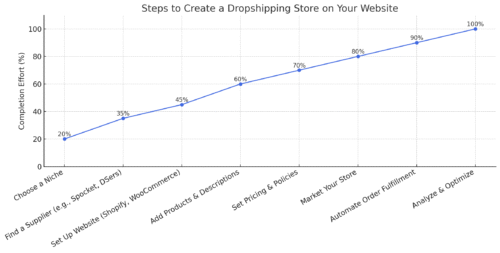
If you’re interested in ecommerce but don’t want the hassle of inventory or shipping, dropshipping might be worth exploring. You sell products online, but a supplier handles everything after the purchase.
Choose a Profitable, Evergreen Product Niche
Niche selection is critical in dropshipping. You want a product people search for year-round—not just seasonal fads.
Look for:
- Evergreen products like home fitness gear, pet supplies, or planners
- Low return rates (avoid complex electronics or clothes with sizing issues)
- Passion-driven niches with repeat buyers (e.g., hobbies, health)
Use tools like Google Trends, Ubersuggest, or Exploding Topics to validate your niche idea.
Integrate With Shopify or WooCommerce for Fulfillment
Once you’ve chosen your products, you need a store. Shopify is the most user-friendly for beginners, while WooCommerce (for WordPress) offers more customization.
Dropshipping plugins that help:
- DSers or Oberlo for Shopify
- AliDropship for WooCommerce
These tools automate the process—from adding products to syncing orders with your supplier.
Market Products Through Blog Posts and SEO
Rather than relying only on paid ads, use your blog to drive organic traffic. A blog that answers buyer questions can double as a product funnel.
Here’s how:
- Write how-to articles and include product links
- Create comparison or review posts for related items
- Use internal linking to guide readers to your store
SEO-focused content takes time, but it’s free traffic that compounds over time.
Use Upsells and Bundles to Increase AOV
Average order value (AOV) is the hidden lever of dropshipping success. Getting more revenue per customer makes your business more profitable—even with low margins.
Ideas to test:
- Offer complementary products (e.g., sell phone cases with screen protectors)
- Bundle bestsellers into a discounted package
- Use “frequently bought together” popups at checkout
Tools like Zipify make it easy to add upsells and bundles to your store without overcomplicating things.
8. Generate Passive Income Through Email Monetization
Email might feel old-school, but it’s one of the most reliable ways to build trust and drive revenue. With the right setup, your newsletter can quietly generate passive income month after month.
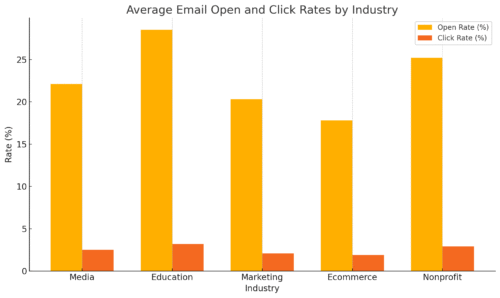
Build a Newsletter With High Open and Click Rates
Your email list is only as good as how often people actually read and act on your messages. Focus on quality over quantity—engaged readers are far more valuable than a massive list.
Here’s what helps boost open and click rates:
- Use short, curiosity-driven subject lines
- Personalize emails with names or location if possible
- Send consistently, whether that’s weekly or bi-weekly
- Always lead with value, not a sales pitch
As shown in the chart above, industries like education and nonprofit tend to see higher open rates, but that doesn’t mean others can’t improve. Clear formatting, mobile-friendly design, and real storytelling all make a difference.
Sell Solo Ads or Use Ad Networks Like Swapstack
Once you have a decent list (even 1,000 subscribers), you can start offering space in your newsletter for ads. Solo ads are where another brand pays to promote to your list directly.
A few platforms to explore:
- Swapstack: A marketplace that connects brands with newsletter owners.
- Paved: Focuses more on larger newsletters but worth exploring if you’re growing.
- InboxAds: A good option if you prefer automated monetization across multiple newsletters.
Solo ads typically pay based on either a flat fee or CPM (cost per thousand opens). You’ll earn more with a niche audience and strong engagement.
Promote Affiliate Offers and Digital Products via Email
Email is perfect for soft-selling affiliate links or your own products. Since subscribers already trust you, they’re more likely to act on your recommendations.
Tactics to try:
- Share personal stories and link to a product that helped solve a problem
- Use P.S. sections to include affiliate offers without disrupting the email’s main value
- Create a welcome sequence that introduces free resources, then offers something paid
Try not to overdo it. Keep the ratio of value-to-promotion healthy. A good rule is 3–4 value emails for every direct promotion.
Segment Your List for Better Monetization Results
Not everyone on your list wants the same thing. Segmenting allows you to send more relevant offers—which usually means better open rates and higher income.
Here’s how to segment effectively:
- By topic interest (use tags from signup forms)
- By behavior (who clicks certain links or downloads lead magnets)
- By purchase history if you’re selling your own products
Tools like ConvertKit, Aweber, or MailerLite all support easy segmentation. When your emails match what subscribers care about, conversions naturally improve.
9. Add a Pay-What-You-Want or Donation Option
Don’t underestimate the generosity of your audience. If your content helps people, some of them will gladly support you—even without a traditional product or service.
Use Tools Like Buy Me a Coffee or Ko-fi
These platforms make it easy to accept small payments without setting up a full ecommerce site.
Top options:
- Buy Me a Coffee: Lets you offer one-time donations, memberships, or even digital products.
- Ko-fi: Great for creatives. Offers donation buttons and a mini storefront.
- PayPal.me: A simpler but less branded alternative.
You can embed buttons on your site, blog posts, and even inside emails.
Explain How Donations Support Your Work
People give when they know it makes a difference. A simple message about what donations help fund can turn a passive visitor into a supporter.
Explain things like:
- “Every donation helps cover hosting and editing time.”
- “Your support keeps this site ad-free and accessible.”
Let them feel like part of the journey, not just a wallet.
Offer Donors Exclusive Perks or Recognition
A little reward goes a long way. You don’t need to create a complex system—just a small gesture can motivate more people to chip in.
Ideas include:
- Early access to posts or episodes
- Monthly shoutouts on your site or newsletter
- A private email Q&A for supporters
This creates a lightweight membership model without needing a full platform.
Encourage Support Through Strategic CTAs
Your call-to-action (CTA) makes or breaks donation income. Place your ask where engagement is highest: after a blog post, inside an email, or on your about page.
Tips for effective CTAs:
- Use conversational language: “If you found this helpful…”
- Add social proof like “Over 250 readers have already donated.”
- Keep the ask small: “Buy me a coffee” feels more doable than “Support me with $10.”
10. License Your Content or Media Assets
Licensing is a lesser-known but powerful way to monetize your work. If you create high-quality content—whether it’s writing, photos, or graphics—others may want to use it in their own work legally.
Sell Usage Rights to Articles, Photos, or Graphics
Content creators, marketers, and publishers are constantly looking for well-made assets they can legally reuse.
You can license:
- Blog posts (republished on content platforms)
- Custom illustrations or social graphics
- Photos, especially niche stock images
When someone licenses your work, they’re not buying it exclusively—they’re paying for the right to use it in a certain way. This means you can sell the same piece multiple times.
Submit Your Assets to Marketplaces Like Canva or Envato
If you prefer a hands-off approach, upload your assets to established marketplaces. These platforms handle the sales and exposure for you.
Consider:
- Canva Creators: Upload templates or illustrations directly into Canva.
- Envato Elements: Great for designers and template creators.
- Creative Market: Offers everything from fonts to presentation slides.
Each has its own terms, but most allow you to earn recurring revenue from downloads or purchases.
Protect and Track Your Licensed Work
To prevent misuse, it helps to keep a record of who licensed your work and what usage rights they purchased. Tools like LicenseStream or simply Google Drive with tracking sheets can do the job.
Also:
- Watermark images you’re previewing publicly
- Use unique naming structures so you can trace unauthorized usage
- Set clear license terms upfront (e.g., “non-exclusive, editorial only”)
It’s not about paranoia—it’s about protecting the work you spent time creating.
Use Licensing as a Backdoor to B2B Monetization
Sometimes, licensing opens doors to bigger clients. A company that licenses one infographic might later ask you to create content exclusively for their brand.
Position yourself by:
- Creating a licensing page that doubles as a portfolio
- Including case studies or examples of how others used your assets
- Promoting your work on LinkedIn or design-focused platforms
Even if it starts slow, this path can lead to larger B2B opportunities, especially if your niche aligns with agency or corporate content needs.
Putting It All Together: Choose What Fits and Start Simple
With so many options out there, it’s easy to feel overwhelmed about where to begin. But the truth is, you don’t need to do everything. The best ways to monetize a website are the ones that align with your content, your audience, and your bandwidth.
If you’re just starting out, pick one or two strategies and get them working before adding more. For example:
- If you already get traffic, display ads or affiliate marketing might be your easiest entry point.
- If you’ve built a small but loyal audience, try digital products or a donation button.
- If you’re offering a skill or service, consulting or licensing can be a fast way to generate income.
Here’s a quick recap of what you can experiment with:
- Turn blog traffic into income through display ads and sponsored content.
- Build trust and long-term value with affiliate marketing and email monetization.
- Own your income by creating digital products or offering services.
- Diversify with dropshipping, licensing, or membership models.
Each path has its own learning curve, but also its own reward. Focus on what feels sustainable—not just what’s trending.
Pro tip: Track your results early. Even if you’re only making a few dollars a week, that feedback helps you tweak, grow, and scale smarter.
You’ve got plenty of flexible, beginner-friendly options. What matters most is starting. Test small, stay consistent, and let your website do more than just inform—let it earn.
